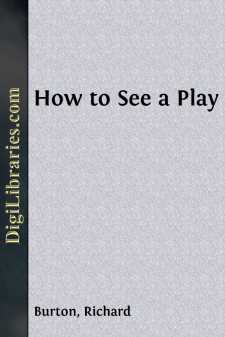Categories
- Antiques & Collectibles 13
- Architecture 36
- Art 48
- Bibles 22
- Biography & Autobiography 816
- Body, Mind & Spirit 145
- Business & Economics 28
- Children's Books 17
- Children's Fiction 14
- Computers 4
- Cooking 94
- Crafts & Hobbies 4
- Drama 346
- Education 58
- Family & Relationships 59
- Fiction 11834
- Foreign Language Study 3
- Games 19
- Gardening 17
- Health & Fitness 34
- History 1378
- House & Home 1
- Humor 147
- Juvenile Fiction 1873
- Juvenile Nonfiction 202
- Language Arts & Disciplines 89
- Law 16
- Literary Collections 686
- Literary Criticism 179
- Mathematics 13
- Medical 41
- Music 40
- Nature 179
- Non-Classifiable 1768
- Performing Arts 7
- Periodicals 1453
- Philosophy 66
- Photography 2
- Poetry 897
- Political Science 203
- Psychology 45
- Reference 154
- Religion 516
- Science 126
- Self-Help 85
- Social Science 82
- Sports & Recreation 34
- Study Aids 3
- Technology & Engineering 59
- Transportation 23
- Travel 463
- True Crime 29
Our website is made possible by displaying online advertisements to our visitors.
Please consider supporting us by disabling your ad blocker.
How to See a Play
by: Richard Burton
Description:
Excerpt
CHAPTER I
THE PLAY, A FORM OF STORY TELLING
THE play is a form of story telling, among several such forms: the short story, or tale; the novel; and in verse, the epic and that abbreviated version of it called the ballad. All of them, each in its own fashion, is trying to do pretty much the same thing, to tell a story. And by story, as the word is used in this book, it will be well to say that I mean such a manipulation of human happenings as to give a sense of unity and growth to a definite end. A story implies a connection of characters and events so as to suggest a rounding out and completion, which, looked back upon, shall satisfy man's desire to discover some meaning and significance in what is called Life. A child begging at the mother's knee for "the end of the story," before bedtime, really represents the race; the instinct behind the request is a sound one. A story, then, has a beginning, middle and end, and in the right hands is seen to have proportion, organic cohesion and development. Its parts dovetail, and what at first appeared to lack direction and connective significance finally is seen to possess that wholeness which makes it a work of art. A story, therefore, is not a chance medley of incidents and characters; but an artistic texture so woven as to quicken our feeling that a universe which often seems disordered and chance-wise is in reality ordered and pre-arranged. Art in its story-making does this service for life, even if life does not do it for us. And herein lies one of the differences between art and life; art, as it were, going life one better in this rearrangement of material.
Of the various ways referred to of telling a story, the play has its distinctive method and characteristics, to separate it from the others. The story is told on a stage, through the impersonation of character by human beings; in word and action, assisted by scenery, the story is unfolded. The drama (a term used doubly to mean plays in general or some particular play) is distinguished from the other forms mentioned in substituting dialogue and direct visualized action for the indirect narration of fiction.
A play when printed differs also in certain ways; the persons of the play are named apart from the text; the speakers are indicated by writing their names before the speeches; the action is indicated in parentheses, the name business being given to this supplementary information, the same term that is used on the stage for all that lies outside dialogue and scenery. And the whole play, as a rule, is sub-divided into acts and often, especially in earlier drama, into scenes, lesser divisions within the acts; these divisions being used for purposes of better handling of the plot and exigencies of scene shifting, as well as for agreeable breathing spaces for the audience. The word scene, it may be added here, is used in English-speaking lands to indicate a change of scene, whereas in foreign drama it merely refers to the exit or entrance of a character, so that a different number of persons is on the stage.
But there are, of course, deeper, more organic qualities than these external attributes of a play. The stern limits of time in the representation of the stage story—little more than two hours, "the two hours traffic of the stage" mentioned by Shakespeare—necessitates telling the story with emphasis upon its salient points; only the high lights of character and event can be advantageously shown within such limits. Hence the dramatic story, as the adjective has come to show, indicates a story presenting in a terse and telling fashion only the most important and exciting things. To be dramatic is thus to be striking, to produce effects by omission, compression, stress and crescendo....



